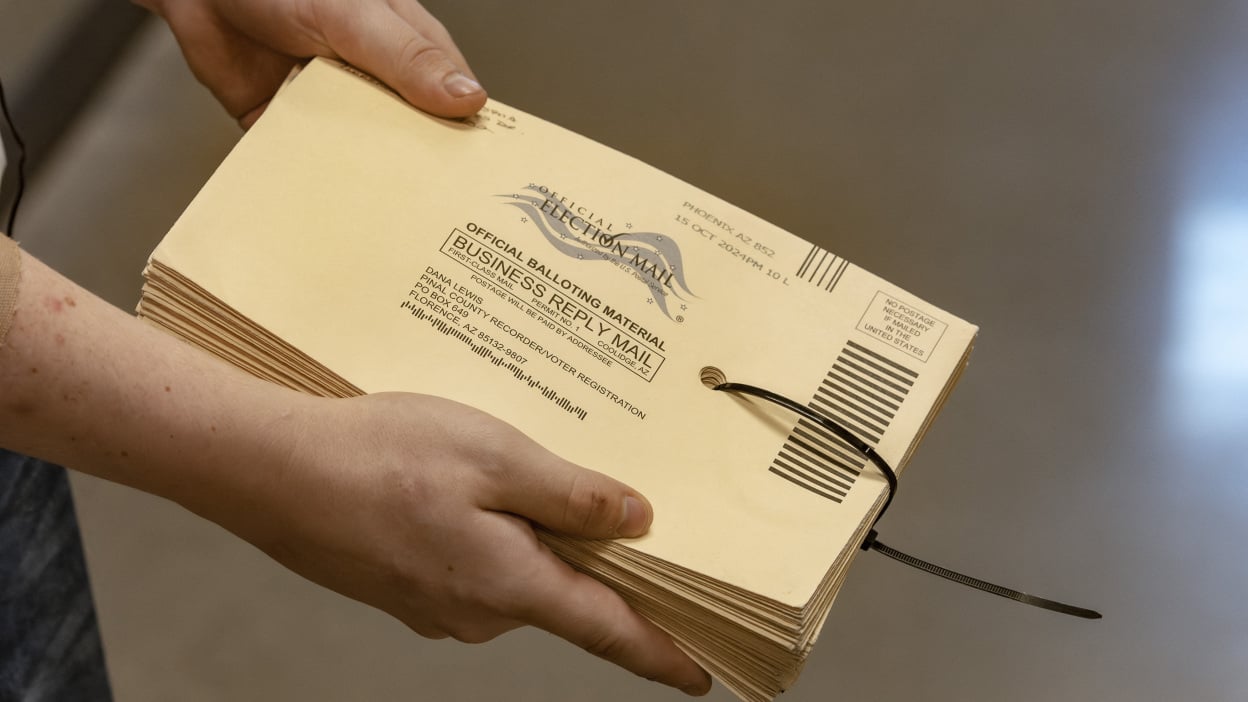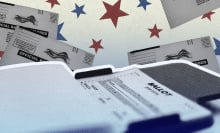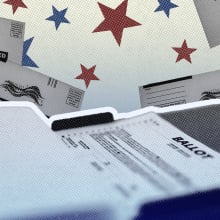Less than a week out from election day, as many around the country send in their mail-in ballots or stand in early voter lines, Americans are anxiously hoping to know who will be the next president ASAP.
Many pundits anticipate a quicker turnaround than the last presidential election, perhaps as early as Wednesday morning, but election experts — noting ongoing outcome-driven attacks on the veracity of ballot counting — want to hedge such expectations.
Closer the race, longer the count
"The public perceives election results coming out fairly quickly, on election night or in the days after, but it has always been true that it has taken days or weeks to get official election results," said Chris Mann, director of research for the Center for Election Innovation and Research, a nonprofit that works with election officials to build stronger confidence in elections. "In order to get the official results, we have to count every single ballot. Making sure that is done properly, correctly, thoroughly, completely, it takes a while, and states have different processes."
Mann and others urge the public to understand that no two elections are alike, and a lot has been invested into the 2024 election that wasn't integrated into the 2020 process — this will speed up the count in some states, but that doesn't mean results will come out immediately. There are three important factors to understanding election results, he explained: First, just how close the result margins turn out to be; second, the technological factors used to tabulate results; and third, the electoral policies in each state.
Of the bunch, said Mann, close margins are the most important factor in establishing a result timeline. An election with close margins requires more ballots be counted before an outcome can confidently be called by media outlets, which is what led to the near 5-day wait in 2020.
Polls, of course, are already making educated guesses about the closeness of results in both the presidential race and other offices across the 50 states. But polls aren't actually projections about the winners and shouldn't be taken as such, according to experts. Instead, they try to capture and estimate voter attitudes. Intention, however, is slippery to capture, and voter opinion can change in a matter of minutes. Closer margins obscure these results even further, and may result in even more dedicated ballot counting.
Tech investments speed up counts, but have limits
State-specific technology will also play a key factor in calling a winner. Since 2020, election officials have invested heavily in expanding updated and faster ballot counting machines and processes to speed up the tech's use. Machine upgrades in states like Wisconsin, for instance, will speed up day-of counting compared to the last go-round.
"A variety of states, swing states and non-swing states, have invested in technology," Mann said. "If you ask election officials, or folks who closely observe elections, this election will be the most secure and transparent and well-run because there has been this investment in technology… We will be able to count ballots much faster than we have in almost any previous election across the country."
Technological innovations are bolstered by human-monitored processes, which can simultaneously speed up and slow down the counting process. And counting can't begin until ballots are verified, the most time consuming part of the entire tabulation process. Mann points to two important state policies that will determine when counting can take place. The first is whether or not a state allows what is known as "pre-processing," in which officials validate absentee and mail-in ballots ahead of time to speed up counting.
Earlier this month, the CEIR published a report on the state of early, mail-in voting policies per state, outlining a shift to allow more pre-processing efforts among 43 of the 50 states. Michigan and Nevada, for example, will now participate in pre-processing, with Michigan allowing early voting for the first time in order to speed its reporting up. Notably, Wisconsin and Pennsylvania do not allow pre-processing, and Pennsylvania is expected to lag behind other swing states in reporting an official count.
"Counting ballots takes time, and confusion around perceived delays can open the door to misinformation and unfounded doubts about the integrity of the count," the organization wrote. "Pre-processing reinforces election integrity and improves administrative efficiency. Beginning to process mail or absentee ballots before election day gives election officials more time to detect, investigate, and address potential errors or irregularities before election day."
The second state policy at play is the window of acceptance a state has for receiving ballots. States like California, Oregon, and Washington accept ballots postmarked on election day, which means contentious seats down the ballot may not be called for weeks. Federal law gives overseas residents and military members the same allowance, established in the 1980s. Even swift pre-processing may be swamped by day-of or post-election day ballots. "Election officials get a lot of ballots, and you can't pre-process something you don't have," said Mann. "So when the mail truck pulls up to the election office and unloads bags and bags of mail ballots that have just arrived, they again have to go through that whole process, even if they were allowed to process the ones that they had gotten days before, in advance."
Early voting has become an essential part of the pre-election day build up. Independent organizations like VoteHub attempt to monitor and track the amount of absentee and mail-in voting requests and returns for the public using web data, offering a scope to early voting.
Tweet may have been deleted
The election is safe, despite claims otherwise
But even with policies that support human or machine help, and a host of data insights, official ballot counting takes time. That time opens up room for voter anxiety and misinformation. From attacks on mail-in ballots to false claims about election technology, voters can anticipate a swell of false partisan claims circulating election day about the veracity of the count. "One thing that's really important to watch out for is how much of this information is driven by outcome," said Mann. "These are not principled attacks, but opportunistic attacks driven by outcomes, not about the process."
Conflicting information may also sow doubt among voters. Mann encourages individuals to visit Vote.gov to get the most accurate information about their state's electoral process and officials, including how it declares a winner — the website has been revamped since 2020 to include even more resources for voters. Mann also points to CEIR's interactive guides that explain just how your ballot becomes a vote, what happens after a vote is cast, and how the media covers an election.
Election day will be a blur of unofficial calls based on early polls and conjecture by major political parties, with election officials reassuring the public as much as possible. Media outlets will try to beat each other to the most accurate call, based on a calculation of the gap between candidates and the number of uncounted ballots left. Simultaneously, political leaders on both sides may be eager to urge on more counting, ask to halt the count to call a winner, or participate in a confusing combination of both, as was seen with the 2020 Trump campaign's scattered ideological stance to mail-in ballot counting.
But one thing is certain: Your vote is secure. "Our elections will not be perfect. There will be power outages, there will be poll workers [who] oversleep and don't open the polls on time, but they will be as close to perfect as they have ever been," said Mann. "I'm 100 percent confident that it will be the best election that we have ever had, but it's also the election that's been under the most attack."
Topics Social Good Elections Politics



















